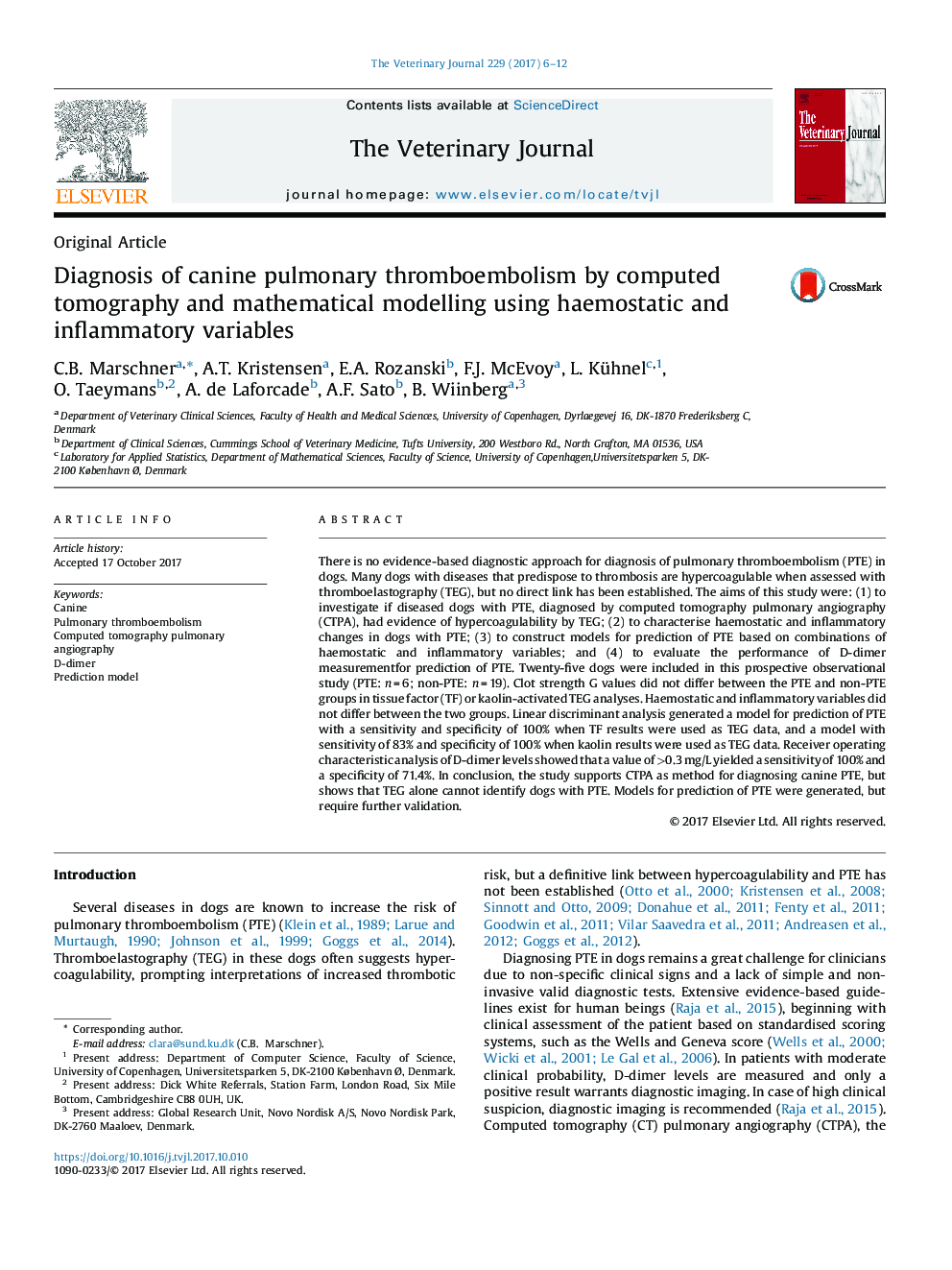| Article ID | Journal | Published Year | Pages | File Type |
|---|---|---|---|---|
| 8505026 | The Veterinary Journal | 2017 | 7 Pages |
Abstract
There is no evidence-based diagnostic approach for diagnosis of pulmonary thromboembolism (PTE) in dogs. Many dogs with diseases that predispose to thrombosis are hypercoagulable when assessed with thromboelastography (TEG), but no direct link has been established. The aims of this study were: (1) to investigate if diseased dogs with PTE, diagnosed by computed tomography pulmonary angiography (CTPA), had evidence of hypercoagulability by TEG; (2) to characterise haemostatic and inflammatory changes in dogs with PTE; (3) to construct models for prediction of PTE based on combinations of haemostatic and inflammatory variables; and (4) to evaluate the performance of D-dimer measurement for prediction of PTE. Twenty-five dogs were included in this prospective observational study (PTE: n = 6; non-PTE: n = 19). Clot strength G values did not differ between the PTE and non-PTE groups in tissue factor (TF) or kaolin-activated TEG analyses. Haemostatic and inflammatory variables did not differ between the two groups. Linear discriminant analysis generated a model for prediction of PTE with a sensitivity and specificity of 100% when TF results were used as TEG data, and a model with sensitivity of 83% and specificity of 100% when kaolin results were used as TEG data. Receiver operating characteristic analysis of D-dimer levels showed that a value of >0.3 mg/L yielded a sensitivity of 100% and a specificity of 71.4%. In conclusion, the study supports CTPA as method for diagnosing canine PTE, but shows that TEG alone cannot identify dogs with PTE. Models for prediction of PTE were generated, but require further validation.
Keywords
Related Topics
Life Sciences
Agricultural and Biological Sciences
Animal Science and Zoology
Authors
C.B. Marschner, A.T. Kristensen, E.A. Rozanski, F.J. McEvoy, L. Kühnel, O. Taeymans, A. de Laforcade, A.F. Sato, B. Wiinberg,
